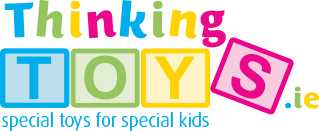Purchase Now
Autism-Friendly Strategies for Encouraging Physical Activity
Physical activity for young autistic individuals benefit from physical activity in a variety of important areas.
Improvements Include:
- Motor Skills
- Fitness
- Muscular Strength & Endurance
- Social Skills
Autism-Friendly Strategies for Encouraging Physical Activity:
1. Start Small: The goal is to make physical activity a regular and enjoyable part of daily life. The goal is to be patient with exercise and think about the long term benefits of exercise.
Here are some simple ideas to add physical activity into a daily routine:
- Walking to school (when the weather improves)
- Walking the dog
- Turn TV adverts into exercise breaks. Join your child in having fun with rigorous activity such as jumping jacks or jogging on the spot
- Plan regular family trips to the playground
2. Sample Different Types of Physical Activity:
- Find the physical activity that your child loves. There are so many options from basketball to swimming, from riding bikes to riding horses, there really are so many options that you or your child can try.
- The goal is to find the sport your child loves.
3. Build Motor Skills:
- Your child may need to build some fundamental motor skills to successfully participate in physical activity.
- You can make this skill-building enjoyable by playing games that encourage your child to:
- Have Fun with music moving in different ways (e.g. jump, hop, and skip)
-
Play with different types of equipment such as balls, bats and rackets (e.g. throw, catch, kick and strike).
-
Improving these skills at home, will increase the likelihood that your child will enjoy other socially engaging physical activities such as playground games and recreational sports.
4. Tips for Making Physical Activities Autism Friendly:
- Here are three practical strategies commonly used in activity programs designed for youth who have autism:
- Get Visual: Many people with autism are visual learners. Visual supports such as task cards, physical demonstrations and video modelling often prove very helpful.
-
Someone Who Understands: Ideally, we want autistic youths to have access to physical activity programs led by facilitators who understand how to communicate and motivate participants in autism-friendly ways.
-
Routine: Routine is very important for autistic individuals. I suggest building a regular and predictable structure into the physical activity program. Create a visual schedule to help reinforce the routine.
